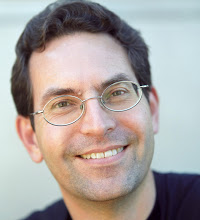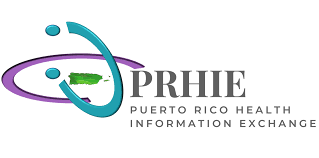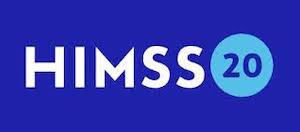 Last week, HL7 held it’s annual plenary meeting in Baltimore at the Hyatt Regency...For the FHIR project, our main attention was the ballot. Across the core standard, and multiple implementation guides, we received >800 detailed comments as part of the ballot. This represents a slight increase over the last ballot, but there was a clear change in the focus of the comments – there was a significant drop in the number of comments relating to the infrastructure, and much more focus on the domain content, and it’s applicability to real world problems. This is a clear marker of the growing maturity of the standard. We continue to expect that we’ll publish FHIR release 3 at the end of this year.
Last week, HL7 held it’s annual plenary meeting in Baltimore at the Hyatt Regency...For the FHIR project, our main attention was the ballot. Across the core standard, and multiple implementation guides, we received >800 detailed comments as part of the ballot. This represents a slight increase over the last ballot, but there was a clear change in the focus of the comments – there was a significant drop in the number of comments relating to the infrastructure, and much more focus on the domain content, and it’s applicability to real world problems. This is a clear marker of the growing maturity of the standard. We continue to expect that we’ll publish FHIR release 3 at the end of this year.
FHIR
See the following -
Global OpenHIE Community to Hold 2019 Conference in Ethiopia
 The OpenHIE community will hold its second annual community meeting November 4-8, 2019 in Addis Ababa, Ethiopia. Between 200 and 300 individuals are expected to attend with the ultimate goal of development and efficient and effective operation of national and regional health information exchanges. OpenHIE, short for Open Health Information Exchange, is a global, mission-driven collective dedicated to improving the health of the underserved through open, collaborative development of implementation tools and to supporting country-driven, large-scale health information exchange. Read More »
The OpenHIE community will hold its second annual community meeting November 4-8, 2019 in Addis Ababa, Ethiopia. Between 200 and 300 individuals are expected to attend with the ultimate goal of development and efficient and effective operation of national and regional health information exchanges. OpenHIE, short for Open Health Information Exchange, is a global, mission-driven collective dedicated to improving the health of the underserved through open, collaborative development of implementation tools and to supporting country-driven, large-scale health information exchange. Read More »
- Login to post comments
Google Joins VistA Team Proposing Open Source EHR for the Department of Defense
 Google has thrown its hat into the EHR ring by joining the team led by PwC which is proposing that the Department of Defense (DoD) upgrade their current EHR to Defense Operational Readiness Health System (DORHS), a customized application built for the DoD and based on VistA, the open source EHR developed by the U.S. Department of Veterans Affairs (VA)...Google’s participation has enormous implications for both the DoD’s EHR and to the healthcare industry as a whole. By choosing the open source EHR team, Google...has sent a clear message to the world that VistA is the best option for the DoD.
Google has thrown its hat into the EHR ring by joining the team led by PwC which is proposing that the Department of Defense (DoD) upgrade their current EHR to Defense Operational Readiness Health System (DORHS), a customized application built for the DoD and based on VistA, the open source EHR developed by the U.S. Department of Veterans Affairs (VA)...Google’s participation has enormous implications for both the DoD’s EHR and to the healthcare industry as a whole. By choosing the open source EHR team, Google...has sent a clear message to the world that VistA is the best option for the DoD.
- Login to post comments
Grahame Grieve's FHIR report from Baltimore HL7 Meeting
- Login to post comments
Halamka Evaluates Blockchain for Health Information Exchange
Yesterday, I read a New York Times article about a possible successor to Bitcoin called  Ethereum, which provides a distributed database (no central repository) for the purpose of tracking financial transactions. I immediately thought of the challenge we have turning silos of medical information into a linked, complete, accurate, secure, lifetime medical record. Might blockchain technology be useful in healthcare? I posted the question to my colleagues, Arien Malec (VP, Data Platform and Acquisition Tools at RelayHealth and the new Chair of the HIT Standards Committee) and David McCallie (SVP of Medical Informatics at Cerner).
Ethereum, which provides a distributed database (no central repository) for the purpose of tracking financial transactions. I immediately thought of the challenge we have turning silos of medical information into a linked, complete, accurate, secure, lifetime medical record. Might blockchain technology be useful in healthcare? I posted the question to my colleagues, Arien Malec (VP, Data Platform and Acquisition Tools at RelayHealth and the new Chair of the HIT Standards Committee) and David McCallie (SVP of Medical Informatics at Cerner).
- Login to post comments
Halamka on the ONC Blockchain Challenge
 Early this year, I posted a collaborative discussion about the potential applications of Blockchain for healthcare. Ariel Ekblaw from the MIT Media Lab collaborated with Beth Israel Medical Center (BIDMC) to actually implement Blockchain medication reconciliation with deidentified patient data. ONC selected it as a winner of the Blockchain Challenge. The idea is simple. Blockchain was invented to handle financial transactions such as deposits and withdrawls. Medication management is very similar to a bank account. Think of your body as a vault.
Early this year, I posted a collaborative discussion about the potential applications of Blockchain for healthcare. Ariel Ekblaw from the MIT Media Lab collaborated with Beth Israel Medical Center (BIDMC) to actually implement Blockchain medication reconciliation with deidentified patient data. ONC selected it as a winner of the Blockchain Challenge. The idea is simple. Blockchain was invented to handle financial transactions such as deposits and withdrawls. Medication management is very similar to a bank account. Think of your body as a vault.
- Login to post comments
Halamka's Notes on the November HIT Standards Committee Meeting
The November HIT Standards Committee focused on “asynchronous bilateral cutover” - the compatibility of different CCDA payloads, healthcare IT that supports long term services and support, an update on the Standards & Interoperability projects, a discussion of data provenance efforts, and the HITSC workgroup organization. Read More »
- Login to post comments
Halamka: Advice to the New National Coordinator
Karen DeSalvo started as the new National Coordinator for Healthcare Information Technology on January 13, 2014. After my brief discussion with her last week, I can already tell she's a good listener, aware of the issues, and is passionate about using healthcare IT as a tool to improve population health...What advice would I give her, given the current state of healthcare IT stakeholders?
- Login to post comments
Health Gorilla and the Puerto Rico Department of Health Reach Milestone in Health Information Exchange Network
 Health Gorilla, the largest interoperability provider in Puerto Rico, in conjunction with the Puerto Rico Department of Health (PRDOH), today announced a milestone achievement following the official launch of the Puerto Rico Health Information Exchange (PRHIE) on July 1st. In the one month since go-live, Health Gorilla has successfully connected 25% of Puerto Rico's population to the PRHIE. This innovative project enables healthcare providers to access and share patient medical record data securely and electronically across more than 400 care sites, 4,200 providers, and more than 700,000 patients.
Health Gorilla, the largest interoperability provider in Puerto Rico, in conjunction with the Puerto Rico Department of Health (PRDOH), today announced a milestone achievement following the official launch of the Puerto Rico Health Information Exchange (PRHIE) on July 1st. In the one month since go-live, Health Gorilla has successfully connected 25% of Puerto Rico's population to the PRHIE. This innovative project enables healthcare providers to access and share patient medical record data securely and electronically across more than 400 care sites, 4,200 providers, and more than 700,000 patients.
- Login to post comments
Health Information Exchange Resist Cures (Part 2)
 The previous section of this paper introduced problems found in HIE by two reports: one from the Office of the National Coordinator and another from experts at the Oregon Health & Science University. Tracing the causes of these problems is necessarily somewhat speculative, but the research helps to confirm impressions I have built up over the years. The ONC noted that developing HIE is very resource intensive, and not yet sustainable. (p. 6) I attribute these problems to the persistence of the old-fashioned, heavyweight model of bureaucratic, geographically limited organizations hooking together clinicians. (If you go to another state, better carry your medical records with you.) Evidence of their continued drag on the field appeared in the report...
The previous section of this paper introduced problems found in HIE by two reports: one from the Office of the National Coordinator and another from experts at the Oregon Health & Science University. Tracing the causes of these problems is necessarily somewhat speculative, but the research helps to confirm impressions I have built up over the years. The ONC noted that developing HIE is very resource intensive, and not yet sustainable. (p. 6) I attribute these problems to the persistence of the old-fashioned, heavyweight model of bureaucratic, geographically limited organizations hooking together clinicians. (If you go to another state, better carry your medical records with you.) Evidence of their continued drag on the field appeared in the report...
- Login to post comments
HHS Releases Landmark Report: Reforming America's Healthcare System
 On December 3, 2018, the Department of Health and Human Services (HHS) released an extensive, 120-page report on the administration's proposals to reform the healthcare system. The report, titled Reforming America's Healthcare System Through Choice and Competition, is divided into four major sections. The report that government policy of the last few years has suppressed competition, increased prices for healthcare, and limited choices for consumers. Though rich in detail as it tries to prove each of these points, the more than fifty recommendations are often broad and aspirational rather than practical. Since I am not a health economist, I will leave the market issues to others to discuss (many of the ideas in this report have been vetted and discussed by others previously). But there are two sections of the report which make direct mention of Health IT.
On December 3, 2018, the Department of Health and Human Services (HHS) released an extensive, 120-page report on the administration's proposals to reform the healthcare system. The report, titled Reforming America's Healthcare System Through Choice and Competition, is divided into four major sections. The report that government policy of the last few years has suppressed competition, increased prices for healthcare, and limited choices for consumers. Though rich in detail as it tries to prove each of these points, the more than fifty recommendations are often broad and aspirational rather than practical. Since I am not a health economist, I will leave the market issues to others to discuss (many of the ideas in this report have been vetted and discussed by others previously). But there are two sections of the report which make direct mention of Health IT.
- Login to post comments
HIMSS17 - Open Health Guide to the HIMSS Conference in Orlando
 The HIMSS17 Conference taking place in Orlando, FL, is clearly the turning point for open source in the healthcare information technology industry. Although the label "open source" is barely mentioned in the program, the fact is the majority of the presentations at the conference are either based directly on open source technologies or open health concepts. These include the large number of presentations on interoperability, FHIR, and the open/modular Medicaid IT revolution.
The HIMSS17 Conference taking place in Orlando, FL, is clearly the turning point for open source in the healthcare information technology industry. Although the label "open source" is barely mentioned in the program, the fact is the majority of the presentations at the conference are either based directly on open source technologies or open health concepts. These include the large number of presentations on interoperability, FHIR, and the open/modular Medicaid IT revolution.
- The Future Is Open
- Login to post comments
HIMSS18: Key Exhibitor Booths for Open Solutions, Collaboration, and Interoperability
 The annual gargantuan HIMSS conference is back at Las Vegas with over 40,000 participants, over a thousand exhibitors, and more than 600 presentations. As we saw last year in Orlando, more than half of the conference presentations are focused on applications based on open source such as FHIR and Blockchain, and a great emphasis on open solutions for interoperability. With so many presentations and exhibits, it is impossible to provide a full overview. Below are a few of some of the most interesting exhibits of open solutions this year.
The annual gargantuan HIMSS conference is back at Las Vegas with over 40,000 participants, over a thousand exhibitors, and more than 600 presentations. As we saw last year in Orlando, more than half of the conference presentations are focused on applications based on open source such as FHIR and Blockchain, and a great emphasis on open solutions for interoperability. With so many presentations and exhibits, it is impossible to provide a full overview. Below are a few of some of the most interesting exhibits of open solutions this year.
- The Future Is Open
- Login to post comments
HIMSS19: What to Look Out For
 The 2019 HIMSS Annual Conference and Exhibition is in many ways a daunting event. Upwards of 40,000 people will likely attend this combination of educational experience, trade show, and overall shmooz-fest. But many people who go to this conference have a tough time: its sheer size can be quite overwhelming. There are pre-conference symposia, popular and important keynote speakers, educational sessions along with a myriad of topical tracks, and a massive exhibition hall that runs the full length of the Convention Center. Here are some of the things I'll be looking for this year to try to focus my activities...
The 2019 HIMSS Annual Conference and Exhibition is in many ways a daunting event. Upwards of 40,000 people will likely attend this combination of educational experience, trade show, and overall shmooz-fest. But many people who go to this conference have a tough time: its sheer size can be quite overwhelming. There are pre-conference symposia, popular and important keynote speakers, educational sessions along with a myriad of topical tracks, and a massive exhibition hall that runs the full length of the Convention Center. Here are some of the things I'll be looking for this year to try to focus my activities...
- Login to post comments
HIMSS20 - The Open Health Companies That Were Going to Participate

The HIMSS20 conference has been cancelled as a result of concerns due to the global spread of the coronavirus. Although the conference is not taking place, we have decided to publish a variation on our annual HIMSS conference Open Health Guide. Open Health News has published Open Health Guides to HIMSS conferences almost since our founding. They were widely read with thousands of reads each. So they are now a tradition for our publication and there were many great open health companies that were going to have exhibits at the HIMSS20 conference as well as presentations. Dominant health IT vendors spend over a billion dollars a year in PR and marketing for their lock-in solutions. Unable to match that kind of PR power, the annual HIMSS conference has been one of the few opportunities where Open Health companies have had to present their solutions to the world.
- The Future Is Open
- Login to post comments
How Can Open Source Projects Support Themselves in Health Care?
 High prices and poor usability hasn't driven the health care industry away from megalithic, proprietary applications. What may win the industry over to open source (in addition to the hope of fixing those two problems) is its promises of easy customization, infinite flexibility, extensibility, and seamless data exchange. As we will see, open platforms also permit organizations to collaborate on shared goals, which appeals to many participants. But if open source projects can't charge hundreds of thousands of dollars for installation as their commercial competitors do, how will they pay their developers and hold together as projects? This article compares three major organizations in the open source health care space: the tranSMART Foundation, Open Health Tools (OHT), and Open mHealth. Each has taken a different path to the universal goal of stability.
High prices and poor usability hasn't driven the health care industry away from megalithic, proprietary applications. What may win the industry over to open source (in addition to the hope of fixing those two problems) is its promises of easy customization, infinite flexibility, extensibility, and seamless data exchange. As we will see, open platforms also permit organizations to collaborate on shared goals, which appeals to many participants. But if open source projects can't charge hundreds of thousands of dollars for installation as their commercial competitors do, how will they pay their developers and hold together as projects? This article compares three major organizations in the open source health care space: the tranSMART Foundation, Open Health Tools (OHT), and Open mHealth. Each has taken a different path to the universal goal of stability.
- Login to post comments